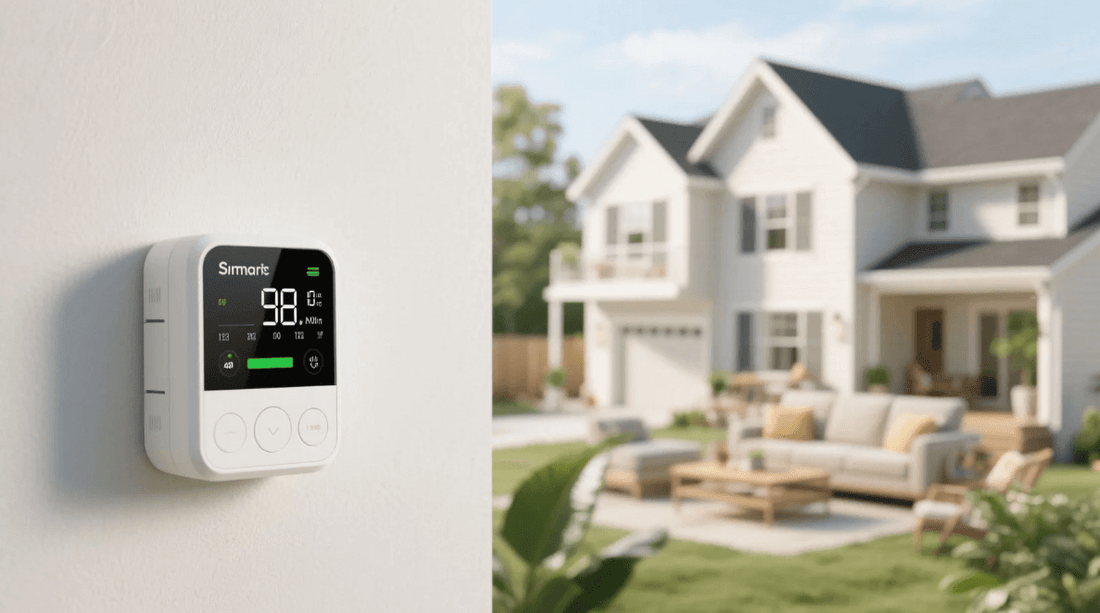
Smart Energy Monitor: Powering the Future of Efficient Homes
Share
Introduction: What Is a Smart Energy Monitor and Why Does It Matter?
As energy costs rise and climate goals intensify, households and businesses alike are searching for intelligent ways to conserve electricity. Enter the smart energy monitor—a connected device designed to provide real-time insights into power usage. Unlike traditional meters, these smart systems offer granular data, remote access, and personalized recommendations, empowering users to make more informed decisions.
Core Features of a Smart Energy Monitor

Real-Time Data Tracking: Continuously monitors energy usage at the circuit or appliance level.
Wireless Connectivity: Integrated with Wi-Fi or Zigbee for mobile app access.
Custom Alerts: Notifications for abnormal consumption or thresholds.
AI-Powered Analytics: Detects trends and recommends optimizations.
Device-Level Monitoring: Some advanced units differentiate usage by appliance.
How a Smart Energy Monitor Works
These devices are typically installed in the main electrical panel or directly on outlets. Using sensors such as CT clamps, they measure voltage and current in real time. Data is then transmitted to a cloud-based platform where it is analyzed and displayed via smartphone or web apps.
Benefits for Smart Home Users
Cost Savings: Identify energy-hungry devices and reduce waste.
Environmental Impact: Supports carbon footprint reduction efforts.
Remote Control: Monitor your home’s energy usage while traveling.
Improved Appliance Management: Prolongs appliance life through load balancing.
Applications in Smart Home Ecosystems

Smart energy monitors integrate seamlessly with home automation platforms such as:
Amazon Alexa
Google Home
Samsung SmartThings
Home Assistant
Through these integrations, users can automate tasks—for example, turning off HVAC systems when energy thresholds are exceeded.
Use Cases in Real Life
EV Charging Management: Balance loads to avoid over-consumption during peak hours.
Solar Energy Optimization: Monitor solar input versus usage in real-time.
Tenant Energy Tracking: Great for landlords with multiple units.
Security and Privacy Considerations
While data is typically encrypted, users should ensure:
Two-factor authentication is enabled
The device manufacturer follows GDPR and CCPA standards
Firmware is regularly updated for vulnerabilities
Smart Energy Monitor vs. Smart Plugs
| Feature | Smart Energy Monitor | Smart Plug |
|---|---|---|
| Monitoring Scope | Whole-house or per circuit | Individual device |
| Accuracy | High (within ±1%) | Moderate |
| Energy Reporting | Detailed dashboards | Basic statistics |
| Automation Options | Broad integration | Limited to device level |
Cost Consideration and ROI
Although initial investment ranges between $100 to $500 depending on features, most users report significant energy bill savings within 6 to 12 months. This makes a smart energy monitor a high-ROI upgrade for modern homes.
Market Trends and Growth
According to Allied Market Research:
The global smart energy monitoring market is projected to grow to $4.5 billion by 2030.
Residential segment is the fastest-growing user base.
Growth is driven by increasing smart home adoption, energy efficiency regulations, and the rise of renewable energy systems.
Choosing the Right Smart Energy Monitor
When evaluating options, consider:
Installation Type: Plug-and-play vs. panel installation
Data Accuracy: Look for Class 1 or better accuracy
App Usability: Must offer intuitive dashboards
Third-party Integration: Ensure compatibility with your smart home system
Environment and Sustainability Impact
Encourages behavior change through real-time awareness
Enables load shifting to reduce grid stress
Supports transition to net-zero homes
Common Brands in the Market
Sense Energy Monitor
Emporia Vue
Neurio (Generac)
Shelly EM
Each offers unique features, from AI-driven appliance detection to solar-ready dashboards.
Final Thoughts: Why Choose a Smart Energy Monitor Today
In a world increasingly focused on sustainability and energy efficiency, a smart energy monitor is no longer a luxury—it’s a necessity. Whether you're a tech-savvy homeowner, a landlord optimizing tenant utilities, or an energy-conscious family, this device can illuminate hidden savings and support a greener lifestyle.
FAQ
Q1: Can I install a smart energy monitor myself?
A1: Basic plug-in models can be DIY-installed, but panel-mounted models require professional installation.
Q2: Do these monitors support solar panel systems?
A2: Yes, many models support net metering and real-time solar tracking.
Q3: Are smart energy monitors accurate?
A3: Most offer ±1% accuracy, which is sufficient for home usage tracking.
Q4: Will the monitor work during a power outage?
A4: No, most require active power, but data is retained in the cloud.
Q5: Are they compatible with smart assistants like Alexa or Google Home?
A5: Yes, many popular brands support voice command and automation integrations.